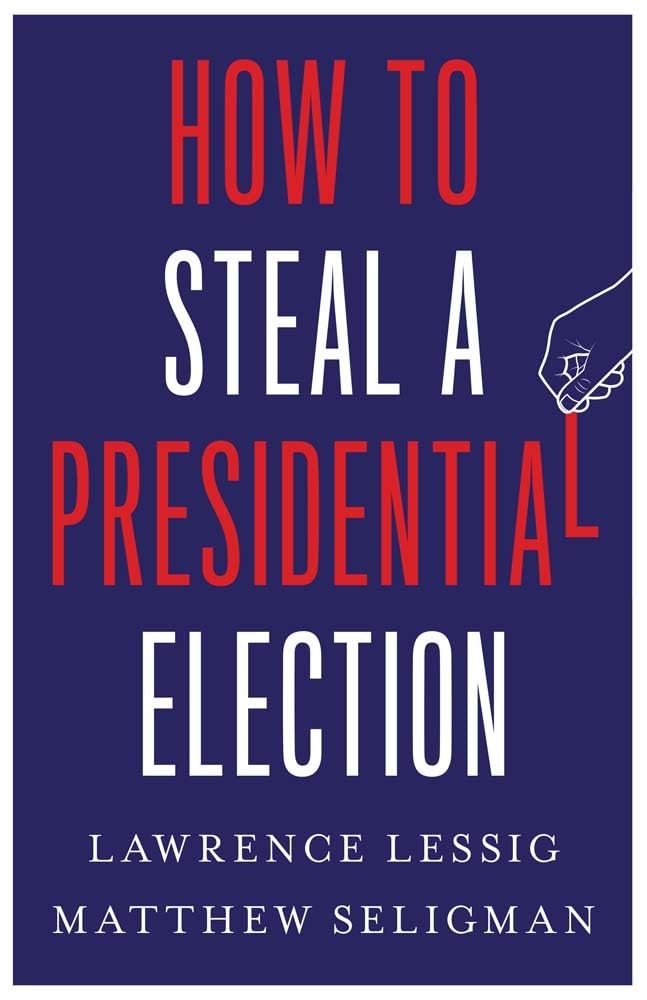How to Steal a Presidential Election gives readers a frank assessment of the 2020 election, laying bare the tactics and legal manoeuvring that nearly upended the democratic process. It also looks ahead, identifying the structural vulnerabilities in the American political system that leave it open to similar threats in the future.
Lawrence Lessig and Matthew Seligman’s How to Steal a Presidential Election brandishes an inflammatory, albeit unnervingly accurate, title. It was meant as a flare shot into the night, a stark warning before the 2024 election. Reading it in the aftermath, however, transforms the experience. The book is no longer just a warning. It’s a captured playbook, a sobering account of the logic and tactics deployed in 2020 and a chilling measure of how close the nation came to a full-blown constitutional crisis.
At its core, the book is a meticulous dissection of the 2020 election and its aftermath, exposing the contorted and tortured logic that figures like John Eastman used to justify attempts to overturn the results. Lessig and Seligman argue that these efforts weren’t just political maneuvering, but exercises in crafting a kind of legal fanfiction, weaving narratives designed to lend plausibility to half-remembered facts and outright fabrications. The authors brilliantly illuminate how a faction of political actors, while claiming to restore “common sense,” pushed arguments that twisted grammatical structures and ignored legal intent to achieve their goals.
The book’s critique extends beyond the plotters themselves. Lessig and Seligman pull no punches in diagnosing a critical weakness in American democracy. A profound gap exists between constitutional theory and public understanding. The average citizen’s civic knowledge has been left to atrophy since high school. This creates a fertile ground for disinformation. When a charismatic figure enters an ideological echo chamber with a message that feels right, many lack the deep knowledge to apply the “sniff test” and see the argument for what it is: a fabrication.
Academia and the media, the authors contend, are often poor medics for this ailment. Academics can speak over the heads of the public, while the media often devolves into a hyperbolic screaming chamber, prioritising fearmongering for targeted audiences over clear, sober explanation.
This is where Lessig and Seligman’s work truly shines. For anyone who finds the Electoral College a labyrinth of arcane rules, this book is a godsend. The authors masterfully embody the idea that the system is detailed, but not all that complicated. They break down every intricate part of the electoral process, from faithless electors to the Electoral Count Act, and explain it component by component. The reading is not difficult, but it is rich with detail, providing context and commentary that expose the potholes in a system ripe for future exploitation.
The book’s structure is both academic and accessible, threading the needle between conversational prose and rigorous analysis. In a clever touch, each chapter concludes with a “tl;dr” (too long; didn’t read) summary. A tight synopsis that is both a humorous nod to our information-saturated age and an invaluable tool for students needing a quick refresher.
This is precisely the kind of book that begs to be discussed and debated. I could easily envision it as a core text for a university elections course, sparking intense classroom discussion. It would be equally at home in an academically inclined book club, providing ample fuel for arguments about which of our system’s vulnerabilities is most terrifying.
While written for a specific political moment, How to Steal a Presidential Election has a staying power that will extend far beyond 2024. Its engaging style and analytical depth make it a crucial historical document of our turbulent times. If you want to understand the political chess match of the last few years and its implications for the future, this book is an indispensable, and unsettling, guide. It has earned a permanent place on my shelf as a reference for this critical moment in American history.
This is a review of Lawrence Lessig and Matthew Seligman’s How to Steal a Presidential Election (Yale University Press, 2024). ISBN: 9780300270792.
Shannon Bow O’Brien is an Associate Professor of Instruction at The University of Texas at Austin. She received her PhD from the University of Florida and her Master’s and Bachelor’s from the University of Louisville. She specialises in American politics with an emphasis on the presidency. She is the author of ‘Why Presidential Speech Locations Matter: Analyzing Speechmaking from Truman to Obama,’ ‘Donald Trump and the Kayfabe Presidency: Professional Wrestling Rhetoric in the White House,’ and ‘Eugenics in American Political Life: How the Politics of Superiority Still Shape Us Today.‘
This review is published under a Creative Commons License and may be republished with attribution.





